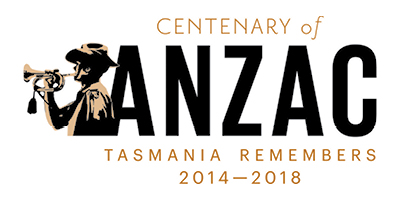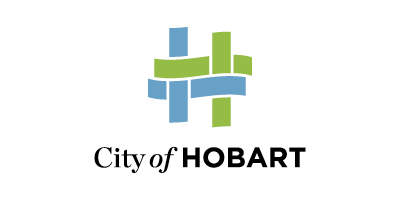The Soldiers of the Avenue
The servicemen commemorated on the Avenue represent a broad cross section of Hobart at the time and provide a unique picture of individual lives and families. Full details are known for all soldiers with details such as age, place of birth and enlistment, occupation and even school attendance. The information for the database has been drawn from The Mercury newspaper, the official Hobart City Council lists of trees from 1918 and 1919, the Tasmanian War Record (Broinowski 1921) and records from the Australian War Memorial including the Roll of Honour and cards, the Embarkation Rolls and Nominal Roll of the 1st AIF. With the increased digitisation of the AIF records (B2455 series) by the National Archives of Australia from 2006, records were reviewed and revised as necessary.
Age
The average age at death was 26 years and 1 month with oldest being 47 and the youngest 17. While it is probable that some of the very young increased their age for enlistment, in most cases the records suggest this was very rare. There are cases of men reducing their age to qualify. The great majority were in their mid-20s at the time of death and were single men.
Place of enlistment
The vast majority enlisted in Tasmania with 450 enlistments with a further 14 enlisting in Victoria, 9 in New South Wales, 4 in Queensland and 1 each in South Australia and Western Australia. 5 enlisted in New Zealand and served in New Zealand units. Two enlisted in the United Kingdom and the place of enlistment is not known for a further 6; one of these was a sailor serving on the SS Boorara, 3 were airmen of whom two were killed with the Royal Flying Corps. The details of 2 men cannot be traced beyond names.
Place of birth
Most have Hobart identified as their native place on Roll of Honour cards. The rest are spread around Tasmania and include a number born overseas. One was born in Germany (Pte William Pfau), 3 in New Zealand and 14 in the United Kingdom. Some of those born outside Hobart came to Hobart for education (attending Friends or Hutchins, University of Tasmania or the Teachers College) or for work. In all cases, the parents, a sibling or the widow of the deceased resided in Hobart at the time of planting.
The important qualification was a member of the family resident in Hobart or New Town asking for a tree. This was not intended as a ‘State’ avenue.
Bruny Island 3
Derwent Valley 13
Germany 1
Hobart 130
India 1
Midlands Region 19
North East Tasmania 7
New South Wales 5
New Zealand 3
South Australia 1
United Kingdom 14
West Australia 1
Channel District, Tasmania 6
East Coast of Tasmania 26
Greater Hobart 17
Huon Valley 19
King Island 3
North Tasmania 16
New Town 12
North West 11
Queensland 4
Tasmania 4
Victoria 15
West Coast 5
Units
Over 110 distinct units are represented.
141 died serving in the 12th Battalion raised in 1914. 23 served and died with the 15 th Bn, 49 with the 26th Bn Tasmania, 52 with the 40th Bn, 10 with the 47th Bn and 41 with the 52nd Bn (the 47th Bn was formed from splitting the 15th Bn and the 52nd from splitting the 12th Bn). 47 died serving with various artillery units and 13 were light horseman. There is one sailor (died as a result of sinking of SS Boorara by submarine action) and five served with either the Australian or Royal Flying Corps. 3 were commissioned and died with British regiments including one man who had enlisted as a private in the 12th Bn. The balance are scattered across engineer companies, tunnelers, 32 other infantry battalions of the 1st AIF, medical units and pioneers and machine gunners.
Cause of death
330 were listed or classed as Killed in Action, 117 died of wounds, 21 of sickness, 4 of disease and 3 in accidents. Three died as prisoners of war one in Germany, one in Turkey (having been wounded and captured at the landing) and one at Bullecourt in France. While most died during the war, 6 trees were planted for men who died after the Armistice and before the peace. All died from sickness. In fact the l4 men who died after October 3rd 1918 (3 men killed in action) all died from sickness, though not all as a result of the influenza pandemic.
Religious affiliation
The religious affiliation of 488 is known, mostly from embarkation rolls and Honour Boards. In some instances, these differ for reasons that can only be speculated about. For example, a Catholic soldier's name may appear on the Honour Board in an Anglican Church because he lived over the road and was well known to the community.
The categories are as they appear in the Embarkation Roll. The single Agnostic was Pte Blackmore, a school teacher and published poet. His brother-in-law was the Premier, later Senator, John Earle. The table will be updated when the religious affiliation for the last 39 is known.
Baptist 4
Church of Christ 1
Church of England 282
Congregationalist 18
Independent 1
Methodist 47
Presbyterian 24
Protestant 5
Roman Catholic 72
Salvation Army 1
Wesleyan 3
None given 3
Agnostic 1
Not known 39
Occupation
While the occupation is known in 334 instances, these have yet to be classified but include everything from accountants and advertising managers to jam factory workers, letter carriers, electricians, farmers and bush workers, clerks of all types, orchardists, musicians, painters and plasterers.
Education
Something of the education of 335 is known with the greatest numbers going to State schools (186 went to schools where the record includes State in the title). Many more attended State schools but the Roll of Honour cards (the main source for this information) simply give a place name or a title that does not include state. 8 attended Friend's school at some stage and 19 attended Hutchins (one person went to both). 8 names appear on the University of Tasmania Board of Honour and 7 on Board in the Philip Smith Centre; a teachers college at the time.
Address
Most have an address recorded in one of the central Hobart suburbs. The addresses come from the Mercury lists in 1918 and 1919, where this was given, and the Roll of Honour cards, which may reflect the address of the next of kin rather than the deceased. The Embarkation Rolls of the 1st AIF (AWM8) have also been used. This address on enlistment is used as the primary address except where the deceased did not reside in Hobart, in which case the address given is that of next-of-kin. In the case of many married men, the address of the wife is different to that of the serviceman as it was common for them to move in with parents or parents-in-law for the duration. Thus an address is given for the soldier and one for the wife. Importantly, it is the wife’s address which was important in qualification for a tree. In the most interesting case, that of the Bowen’s, the crucial qualification is the sister’s address. By 1918 she is the final survivor of her family: her mother died before the war, her father died in 1916 and all the brothers died on service.
There is a great concentration in South, West and North as well as Central Hobart plus Sandy Bay and New Town which account for over 90% of known addresses. In a few instances, those next of kin later moved out of Hobart. Some street names have changed thus Melbourne St is now Victoria St while Central St and High St have likewise become Main Road. The pattern of addresses reflects the pattern of settlement in a smaller and sparser Hobart and it is only in recent years that many addresses in Campbell St and Argyle St have reverted to residences.





